BLOG
Finds and Interests
I have been an abstract thinker for as long as I can remember. I dissect ideas and dig for deeper meanings. As a child, my mother brought me to art exhibits, and we spent hours reveling in the beauty before us. I learned to identify beauty in the most ordinary places, including in the homes of others. I noticed how homeowners arranged their furniture for social gatherings and how the objects in the room represented one’s personality. While a house was merely a building with four walls, I saw how these personal touches transformed it into a home. But what kinds of additions spark this transformation? How do beauty and design inspire each other? I found the answer for myself in custom Rookwood Pottery tiles.

Photos by: Will Seippel
Integrating the Past and the Present
Since my first mortgage, I have sought to learn how to transform a house into a home. Approximately twenty years ago, I brought my family to Georgia and gradually modified our builder-grade home into a custom-made home. Because I consider myself an artistic creature, I prefer to rip out lifeless or dull features and exchange them for more aesthetic, unique properties that mirror my soul.
Most recently, I took delight in replacing the standard tiles of our builder-grade fireplaces with artful, custom-made Rookwood Pottery tiles. While anyone can find suitable modern tiles at their local Home Depot, Rookwood Pottery offers the chance to fill your home with luxurious and exquisite upgrades. Rookwood has many contemporary pieces bridging classic designs to modern interiors, but I find the historic tiles more delicate and aesthetically pleasing.
Defining Rookwood Pottery
Rookwood Pottery first opened its doors in the late 1800s when artist Maria Longworth Nichols Storer made the dive to bring her creative vision to life. She founded Rookwood amid the art pottery movement launching in America, resulting in many traditional pottery designs featuring classic American symbolism and motifs. Within a decade, Rookwood pottery gained international acclaim, rivaling European and Asian markets that ruled the market for centuries. If you want to learn more about the history and pricing of Rookwood Pottery, visit the WorthPoint® Dictionary page on the manufacturer.
Rookwood offers a smorgasbord of designs to choose from. Its website showcases various style collections, including classic tiles introduced when Rookwood’s approach shifted to architectural designs. But with five fireplaces in our home essentially serving as blank canvases, the options were limitless. Rookwood’s talented artists worked closely with me, transforming my ideas from sketches to three-dimensional renderings to plaster molds. Their efforts resulted in beautiful pieces ready for assembly in several designs.
The Tree of Life Equinox
I first selected tiles for the primary bedroom’s fireplace—my sanctuary. I needed something serene and comfortable, and there was no better choice than the Tree of Life Equinox tile.
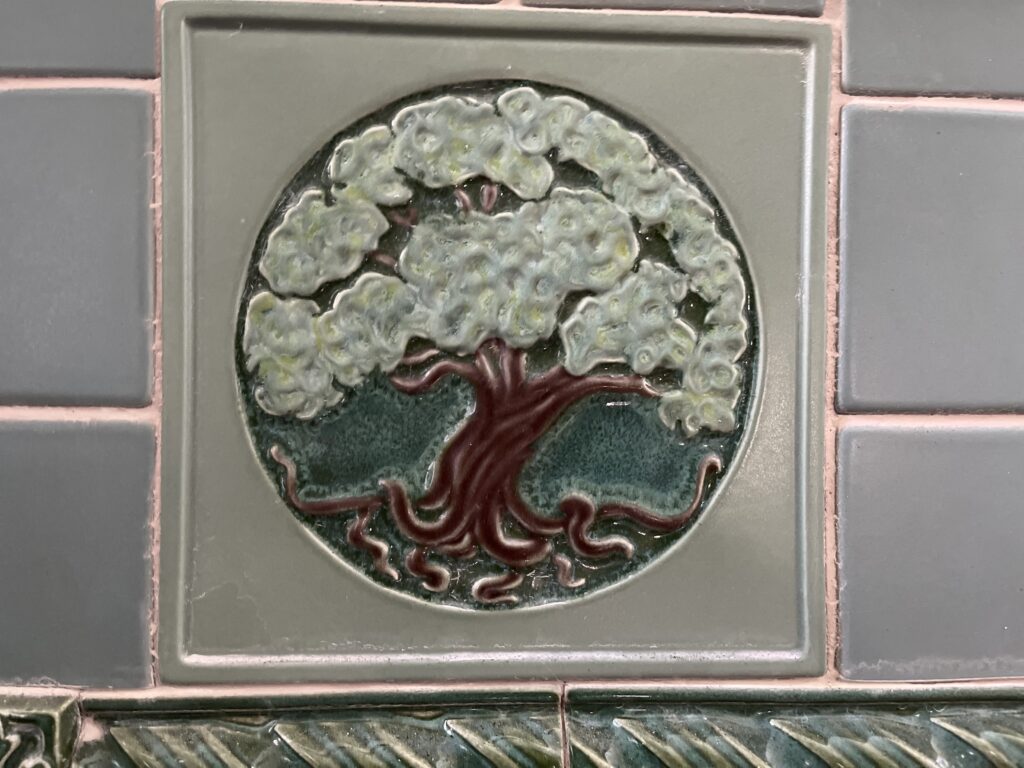
This original style was designed in 1907, making it a historic architectural design. The Tree of Life represents longevity, growth, and prosperity, with a tidal green glazed tile background and rope lining that matches the image. I selected this design because of the instantaneous calming sensation it gave me.
The Revival Bird Series
The second and third designs are interesting—while they are located at opposite ends of my home, they complement each other. Both feature the iconic Revival Bird Series, designed by artist Terri Kern. The living room fireplace showcases all four American birds from the series: the Cardinal, Blue Jay, Rook, and Robin. Each bird is portrayed sitting on a vine amongst foliage and ripples, which appear to depict wind. To supplement the design, glazed tile and Rookwood’s eros tiles featuring relief elements line the hearth under the arrangement of birds.
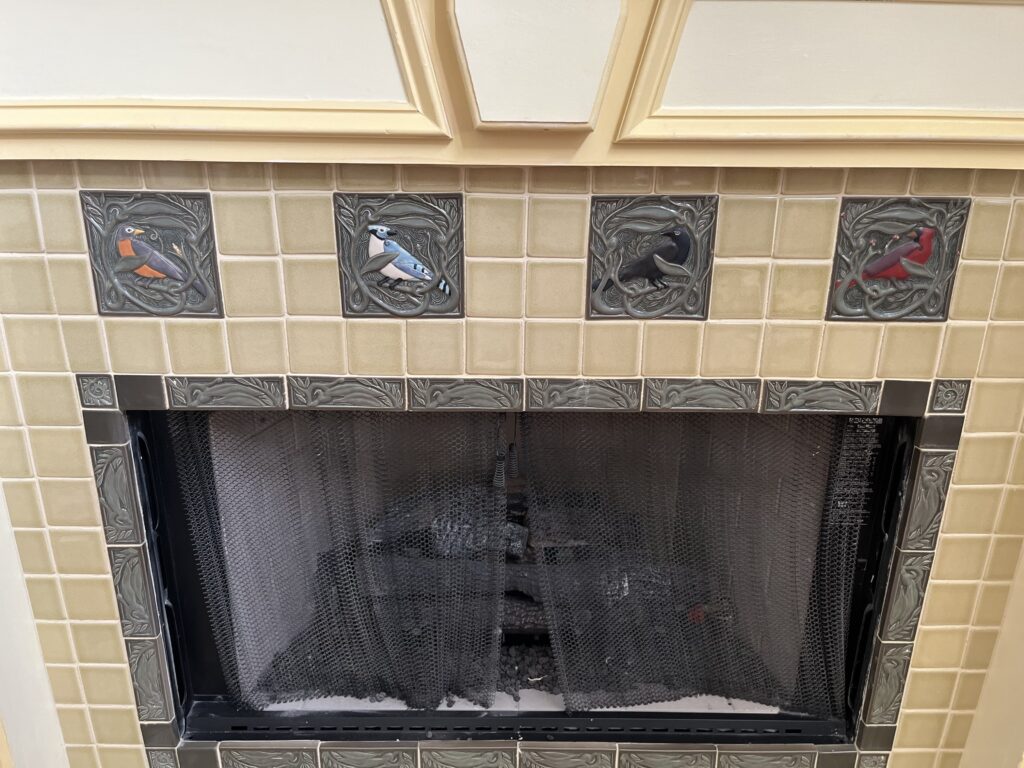
Its sister design is in the lower-level parlor. This fireplace features a Baltimore Oriole and Raven, representing the professional baseball and football teams of the city where I grew up. I refer to this fireplace as “the bird’s nest” as a homage to my roots. Not only does this design have intrinsic value, but it also has monetary value because it is the first Oriole tile that Rookwood created. These tiles are set against a Swaledale glazed tile background, but I did not include a liner. Instead, I used smaller handcrafted cuts to surround the perimeter of the fireplace itself.
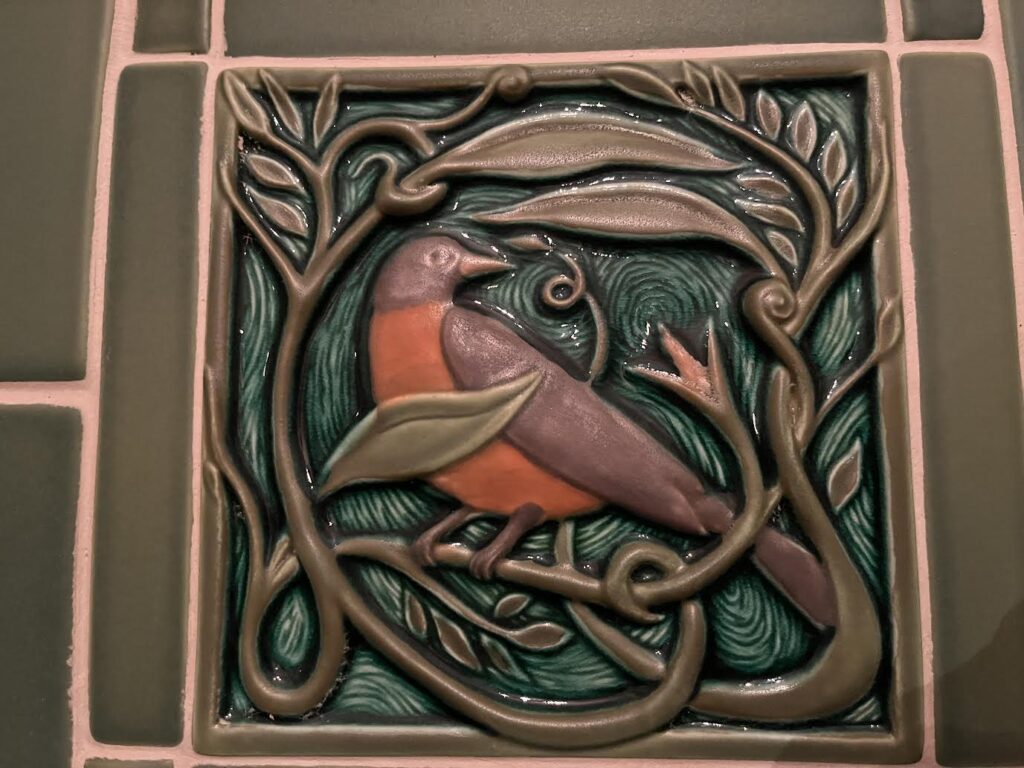
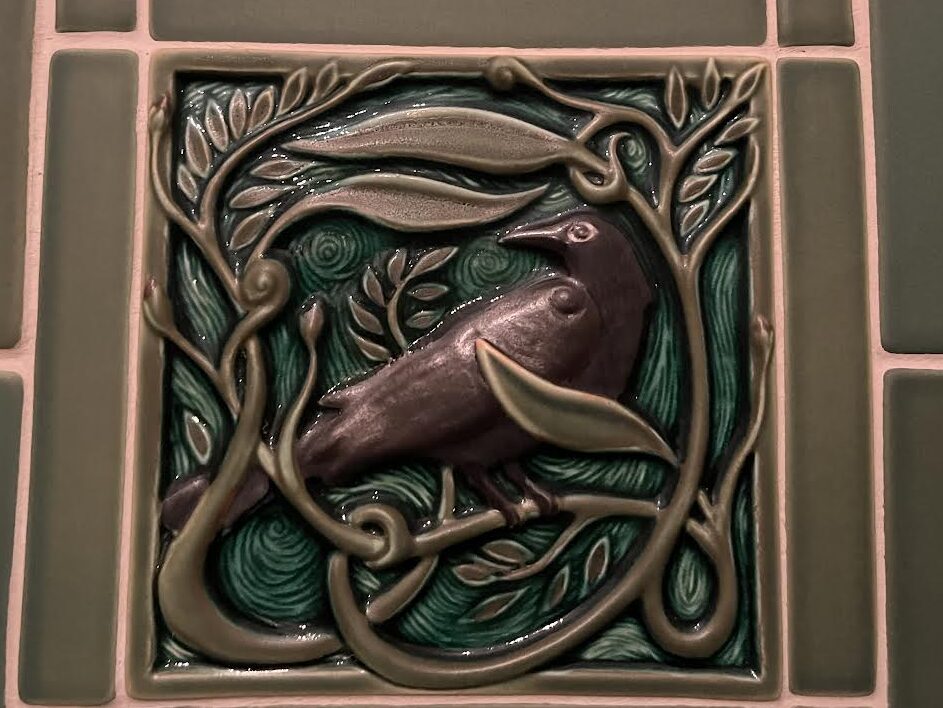
The Eden Rose
My fourth task was renovating the dining room fireplace, a spot I felt had to be more than unique—it needed to embody class and charisma. What better way to achieve this than the heritage decorative Eden Rose tiles made from original Rookwood molds? I felt it would be an architectural disgrace to redesign my fireplaces and neglect to include these.
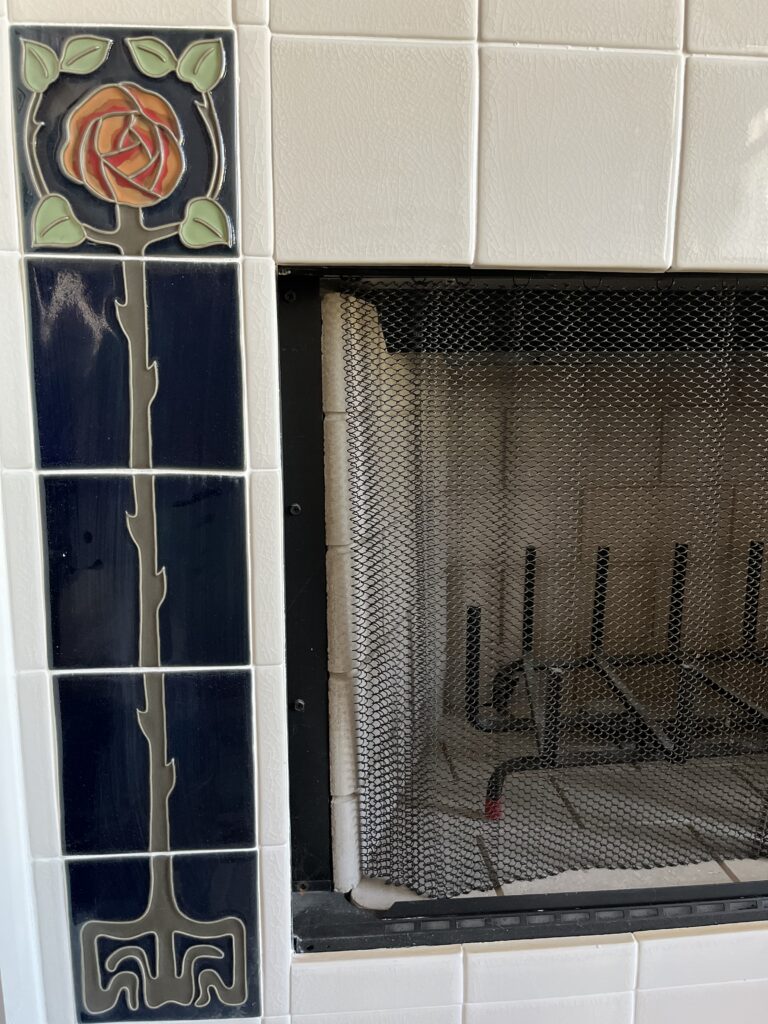
Rookwood originally showcased its Eden Rose series in its 1912 catalog. The series has since been a popular design for fireplaces and kitchen backsplashes. I had seen it featured against light tiles, but I needed something to complement the room’s dark furniture and rug. So, I set the rose itself against a black glazed tile but brought light into the design by incorporating an ivory glaze background. I also avoided using additional liners surrounding the fireplace to draw the eye toward the rose and highlight its complexity and beauty.
The Raven
The final piece was for the fireplace in my study. This design was perhaps the most meaningful architectural transformation because my late parents inspired it. When my parents were married, someone gave them a set of Rookwood Pottery raven statue bookends. With their croaking calls and dark demeanors, ravens are often associated with ill omens, but they have complex symbolism. They can also represent prophecy, insight, change, and opportunity. I see the raven as a highly intelligent creature, and I thought it was a significant way to incorporate a childhood core memory in my present home. Now if only I could get my hand on a pair of original Rookwood Raven Bookends to match.
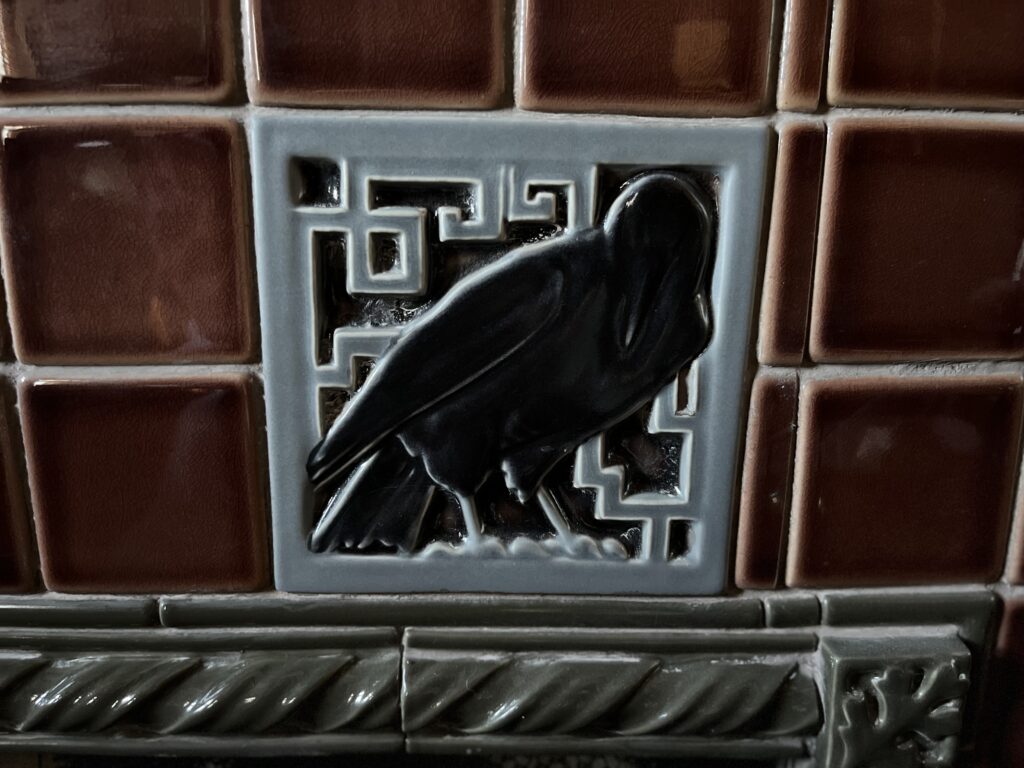
Happy Hunting!
Transforming my home one project at a time has been exciting, but what most excites me is filling my modern-day home with historic beauty. My home is an eclectic museum, and I like to think it has helped my children develop a deeper appreciation for the integrity of historic architecture and furniture. I am always hunting for more unique pieces to fill my home with, and I encourage you to think about small yet beautiful changes for your home as well.
Love a good story of a great find? Read about how I stumbled across a museum-worthy golden Japanese Satsuma vase here.
Will Seippel is the CEO and founder of WorthPoint®, the world’s largest provider of information about art, antiques, and collectibles. An Inc. 500 Company, WorthPoint is used by individuals and organizations seeking credible valuations on everything from cameras to coins. WorthPoint counts the Salvation Army, Habitat for Humanity, and the IRS among its clients.